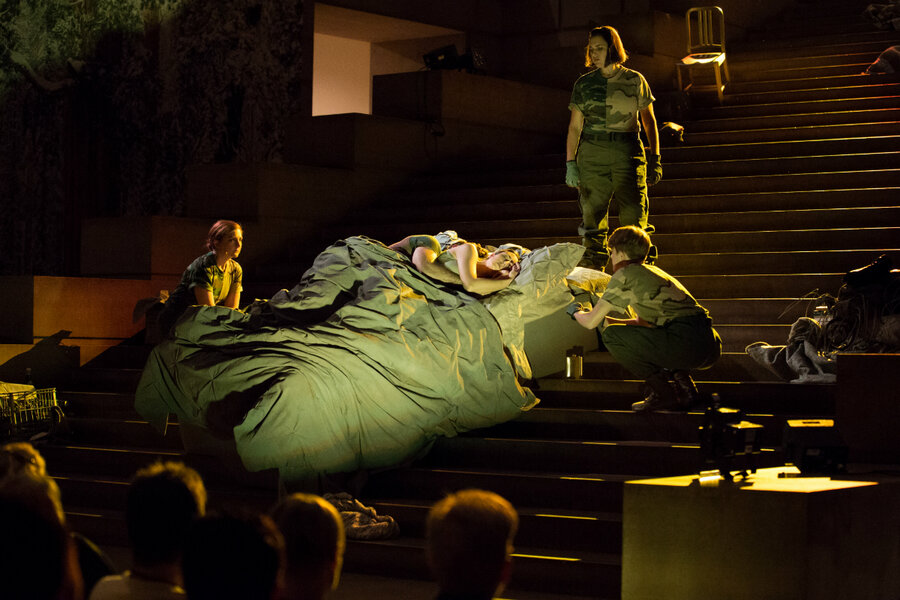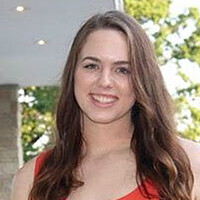With festivals and tastings, opera companies seek ways to retain audience interest
Loading...
When Eva Tierno entered the medieval cloister at the Philadelphia Museum of Art, with columns dotting the perimeter around a large, ornate fountain, she wasn’t sure what to expect from her first experience at the opera.
“I found it surprising how close you were, how really in the middle of it all you were," says Ms. Tierno, a Philadelphia resident who works for the William Penn Charter School. "My expectations were really traditional, and it took me by surprise.”
The performance Tierno attended, “War Stories,” was part of Philadelphia’s O17 (for Opera 2017) festival that took a “Netflix-binge” approach in efforts to attract new audiences. Thirty-one opera performances were offered across the city over a span of 12 days in mid-September.
“War Stories” paired Monteverdi’s seventeenth-century work “Il combattimento di Tancredi e Clorinda” with a contemporary response titled “I Have No Stories To Tell You.” With a small audience and intimate seating, the backdrop of the art museum created an immersive performance. “There was no way you weren’t feeling it,” says Tierno. “The voices were so strong in that small space. It was impressive.”
Tierno’s status as a newcomer to opera marks a small victory for Opera Philadelphia. Low attendance at traditional opera houses across the United States has already driven companies to perform in unique and unexpected places such as public parks, train stations, movie theaters and even in one case, a particle accelerator. And in many cases, these creative stagings have succeeded in drawing new audiences. But now opera companies are facing the next hurdle: How to get those audiences to come back.
“As an industry, that’s where we need to work even harder. There’s a lot of great things happening to get new audiences in for the first time,” says Joe Gfaller, the director of marketing and public relations for the Opera Theatre of St. Louis. “But we’ve not yet worked out the calculus as how to get larger numbers of first time operagoers to become repeat operagoers.”
The typical opera audience tends to be white, affluent, and older. But opera audience numbers measured through 2013 show that the attendance that was seen even at the beginning of the millennium is a thing of the past. Many opera companies are well aware that to survive, they must crack the code of attracting younger and more diverse audiences put off by the formality perceived around grand opera, with its four to five acts, massive castings, and elaborate set designs.
“There can be a lot of preconceived notions about the art form that can create the impression that the art form is elitist and inaccessible,” says Mr. Gfaller. “Those perceptual barriers are among the strongest challenges the art form faces to engage people who have not had a previous experience with opera.”
Many are hopeful that opera companies have the creative talent to reverse this trend. Strategies already in play in opera houses around the US have brought positive results.
“It’s a good news report at many companies about how many people are trying opera out,” says Marc A. Scorca, president and chief executive officer of Opera America.
For example, the Opera Theatre of St. Louis (OTSL) has found that pairing opera with food prepared by local chefs and sommeliers in a relaxed, outdoor environment has drawn new faces. A majority of the people attending Opera Tasting have never been exposed to opera before. At a more traditional performance, only 1 in 5 members of the audience is younger than 50, and only 1 in 10 is nonwhite. But with its more creative stagings, those numbers go up. Among newcomers, one-third of those audience members are younger than 50 and the number of nonwhite audience members doubles.
Opera San Jose in California takes opera to the workplace with a series entitled “Arias in the Office,” which stages performances in Silicon Valley businesses. The Minnesota Opera found success in presenting relatively contemporary material as opera, performing Stephen King’s novel “The Shining” during the 2016 season. All four performances sold out.
With two Philadelphia-centered performances, Opera Philadelphia capitalized on the relevancy of the festival by creating connections between the venue, the community, and the performance. In “We Shall Not be Moved,” which had its world premiere in Philadelphia, the plot centers on Philadelphia’s own history and ties into current discussions around race and police brutality. The headquarters for the black liberation group MOVE, which was bombed by the Philadelphia police in 1985, serves as the backdrop. During “The Wake World,” another opera that had its world premiere at the Philadelphia festival, the performance moved from room to room in the art institute the Barnes Foundation. The opera is inspired by the life of its founder and the art he collected.
Though Tierno hasn’t ruled out a return, she’s waiting for another nontraditional opera experience. “Now I’m curious,” she says. “I don’t know if I’m ready for ‘Madam[a] Butterfly,’ but [‘War Stories’] definitely piqued my interest.”








